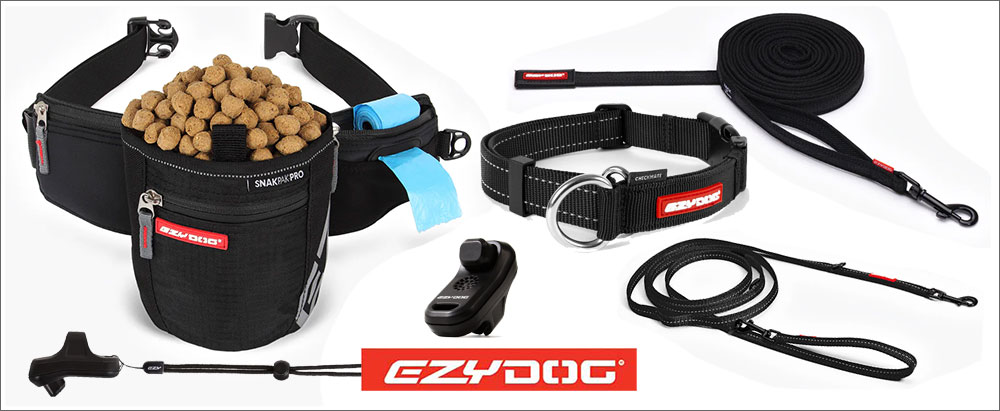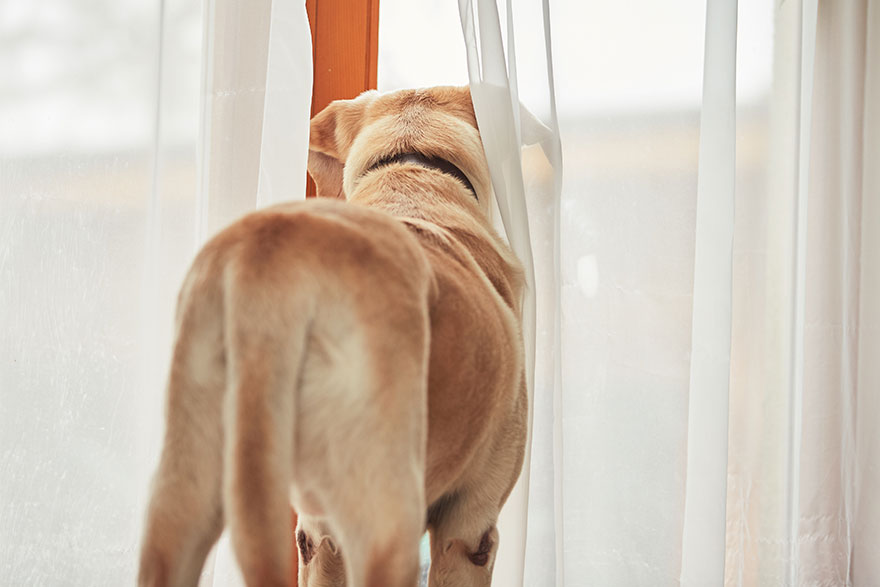
Wait Command (Dog Training Command 9)
- Share
- Share
- Share
- Share
How to Teach Your Dog to Wait & be Patient Using The ‘Wait Command’.
Previously you taught your dog to ‘Stay’ which was a formal command used to get your pooch to stay-put in a particular position such as sitting, standing or laying down until released with another command, such as ‘Come’. There are times however when you want your dog to pause, waiting for a moment before proceeding with what they want to do. Having your dog wait patiently while you place their food bowl down on the floor before they devour the the contents, waiting patiently by a door or top of the stairs allowing you to proceed first, instead of them rushing through or down, bowling you over in the process are just some examples where something else is useful to pause your dog, essentially asking them for a moment of patience, instead of using the formal “Stay Command’.
Apart from having complete control of your dog from a socially responsible perspective by using commands, that if given to another human would come across as orders, it’s also important to use words where you’re being more requesting than commanding. Don’t misunderstand me, the words are still commands, and they are taught to your dog so he/she knows what you’re wanting and does what’s asked, what I’m saying here is there are some useful words that can be taught and used in a more fluid situation.
This dog obedience training article will teach you how to train your dog to wait patiently in a number of different scenarios using the ‘Wait Command‘ by implementing positive reinforcement training techniques.
The following list of items is what we recommend you have handy for this dog training command session:
- Small sized, soft treats that are very tempting
- Clicker
- Collar
- Training Leash, 5-10 Metres (16-32 Foot)
- Small quiet space with no distractions
If you don’t have, or prefer not to use a ‘clicker’, you can substitute it by using the word ‘yes’.

Dog training essentials available from Ezydog Australia
How to Teach Your Dog to Wait for the Food Bowl

1/ With your dog sitting in front of you, hold their food bowl full of its meal at chest level and say ‘Wait’.
2/ Slowly lower the food bowl towards the floor a few inches. If your dog stays sitting, ‘mark’ the event with your clicker, or say ‘Yes’ then raise the bowl back up again, and reward with a treat. If he/she doesn’t stay sitting, say ‘No’ and command him/her to sit again. If he/she remains in place, use the ‘Wait Command’ while you lower the bowl a few inches again, ‘mark’ the event, raise the bowl, and reward with a treat.
3/ Repeat this step several times until your dog consistently remains sitting as you lower the food bowl, ‘marking’ and rewarding each time.
4/ Now gradually move the bowl closer and closer to the floor each time until you can place it on the floor a metre away from your dog and pick it back up without him/her getting up or trying to eat.
5/ Finally, place the bowl on the floor and say a release word, such as ‘Free’ allowing your hungry pooch to move forward and eat.
Remember every time you feed your dog is an opportunity to use ‘Wait’.
It’s also worth noting, having a dog waiting patiently for food is just about the hardest situation you’ll face, so as you’ll discover using ‘wait’ in other situations will be far easier.
How to Teach Your Dog to Wait at the Door

Once you have your fur baby patiently waiting for permission to devour their food, you can move on by applying the ‘Wait Command’ to other situations such as waiting patiently by a door.
1/ Again with your dog sitting to your left, say ‘Wait’ and step forward with your right foot first to begin opening the door just slightly. If your dog starts to move, say, ‘No’ and close the door. Step back and once he/she is sitting say ‘Wait’ and try opening the door again.
If he/she stays in place, close the door, ‘mark’ and reward. Repeat this several times.
2/ After your dog consistently doesn’t move for a small opening, gradually open it wider each successful time. Remember to ‘mark’ and treat each time to reward the good behaviour.
3/ Keep practicing until you can open the door completely and he/she stays, patiently waiting. Once your patient pooch is able to ‘Wait’ consistently with the door wide open, take one step out. Return, close the door, ‘mark’ and reward.
4/ Gradually increase the time the door is open while your dog is still waiting. Mix it up a bit by taking a step out and return, sometimes walk out and invite him/her to come with you, using the ‘Come Command’ and sometimes walk out and close the door behind you, leaving him/her inside.
Remember every time you head out a door is an opportunity to use ‘Wait’.
A good variation of this can be practiced with your dog waiting for you to open the car door to jump in, or when in the backseat of your car, waiting for you to open it and let them out.
How to Teach Your Dog to Wait on a Walk

After the two training examples above, your dog should have a pretty good understanding of what waiting is all about. Now is a good time to practice with your dog on leash.
While you’re walking calmly, without distractions about, say ‘Wait’ as you take a few steps forward. If your dog stops, ‘mark’ and reward, then continue walking. If your dog continues moving after you stop, let him/her walk on until he/she gets to the end of the leash you have set. When he/she stops, ‘mark’ and reward, then continue on walking again. Your pooch will very quickly learn to stop when you say ‘Wait’.
Summary of Teaching Your Dog The ‘Wait Command’
Remember consistency, practice and patience are the keys with all dog training. This command is basically teaching your dog patience, so it’s something you need to have too.
Some dogs that aren’t overly motivated by food treats (rare) will almost certainly take to cooked chicken pieces. However, I would strongly suggest finding a commercial option that works because apart from the expense, chicken is messy and doesn’t last very long out of a sealed container in the fridge. There are many brands and flavours to choose from these days, and many are made with healthy natural ingredients. I would also suggest using and rotating several different types, so your dog doesn’t become used to just one.
As I mentioned above, using a training leash of between 5-10 metres is ideal. These leashes are used extensively for ‘track and trace’ dog training disciplines so are readily available.
Most pet shops, which you can find near you, listed on Pet Directory will have these in stock.
It’s worth noting that the longer leash isn’t to reel your dog in if they ignore you, but to control the situation. Set the length you allow out based on the perimeter you’d like to keep your dog within. As you walk, give your dog some ‘down time’ by saying ‘Free’ as a release word, allowing your dog to roam about freely to relieve themselves or have a good sniff, before resuming the heel position.
The ‘Wait Command’ is ideal to use when out for a walk and people with other dogs are approaching, especially smaller dogs if your dog is larger. Waiting calmly is better than bounding up to a person who’s not ready for some dog love yet.
Having trouble, or have a question about getting your dog to be patient when asked?
Leave a comment for ‘Bear’ below and he’ll be happy to answer it for you, especially if you get his attention by using his name.
We at PetsBook also recommend getting out with your dog and join a training course.
Pet Directory has many local dog training businesses listed near you with experienced and accredited dog trainers ready to help you with dog obedience and dog command training.
» List of Dog Training Commands

Hi, I’m Bear, the Training Manager at PetsBook. With over 20 years experience using positive reinforcement dog training techniques, I’m proud to have the opportunity to help you develop a stronger bond with your fur baby, by teaching you useful commands with obedience training.
- Cat Behaviour & Training 1
- Cat Care 1
- Cat Health 1
- Cats 3
- Dog Behaviour & Training 38
- Dog Care 1
- Dog Grooming 2
- Dog Health 1
- Dogs 42
After A Product or Service for Your Pet?
PetsBook's Pet Directory is the easy way to find everything you need to take care of your 'fur baby'.
ABN: 97 675 528 953







